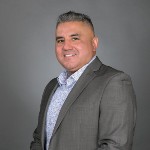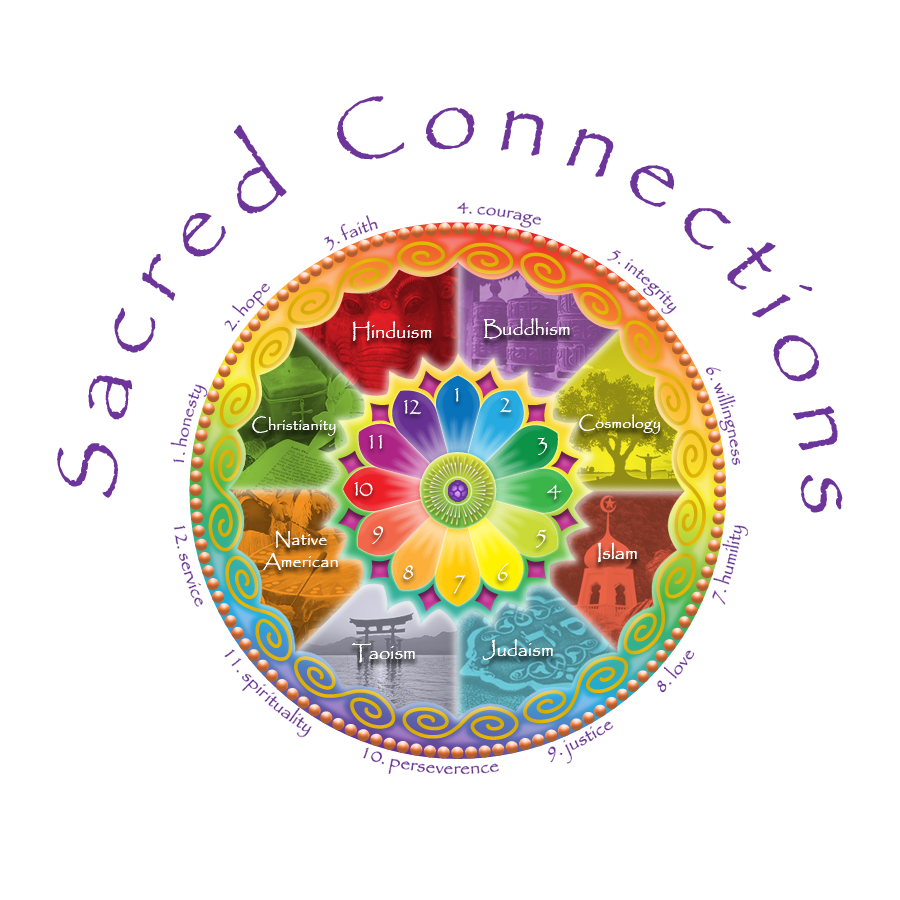Indigenous ways of life promote interconnectedness to all things on earth and
beyond, recognizing that we are inherently connected to everything and
everyone at once. In the Native way, change is seen within the context of a
circle. The circle implies connection to Creator first and foremost, and only
from this sacred place can we find balance within ourselves and connection
to unci maka (earth) and each another. The process of healing our families
and communities takes many different individuals and systems actively
integrating cultural lifeways into mental health and substance use treatment
models.
Over the last five hundred years across the United States, American Indian
people have endured waves upon waves of structural oppression. From
forced removal from Native land, massacres, and the outlawing of cultural and
spiritual ways of life to the establishment of boarding schools to systematically
assimilate Native children (Little, 2018), the American Indian people survived.
In 1879, the United States government established the first boarding school:
Carlisle Indian Industrial School in Pennsylvania (“Past,” n.d.). There would
eventually be 367 boarding schools across the United States tasked with
assimilating American Indian individuals, according to the National Native
American Boarding School Healing Coalition (n.d.). Structural racism forced
American Indians to live with fear of being hurt physically, being attacked, or
fearing for their lives if they spoke their native language and lived their ancient
ways of life. Federal laws even exist that discriminate specifically against this
population (Heinsius, 2019). The past has left a lasting impact on this
community and its members’ mental health intergenerationally. Often called
“epigenetics,” there is scientific proof that the memories and experiences of
our ancestors are passed down to us in our DNA. Today, many descendants
of those who endured historical trauma live with the long-term effects:
posttraumatic stress disorder (PTSD), depression, shock, and grief (Schiele,
Gottschalk, & Domschke, 2020; SAMHSA, 2014).
A Personal Story: J. Carlos Rivera
I have faced many adversities in my life, and they have ultimately guided me
to resiliency, discipline, and a sense of direction. I was raised without both my
parents and became a ward of the court at age thirteen, resulting in me
spending most of my adolescent years in treatment programs, group homes,
and youth authorities. Through the process of treatment and recovery I found
a greater purpose in life that inspired and motivated me to establish a healthy
foundation for my family. Today I am proud to celebrate sixteen years on the
Red Road (i.e., sobriety, long-term recovery), and I dedicate myself to
supporting others on their own healing journeys.
Trauma
Overall, our mental health in Indian country is very unpredictable, and even
when things are good the pain is still there. The spirit of trauma is there,
waiting to be activated, but it is not just the trauma; it is also the grief. Grief
can be triggered by relationships within families and sometimes relationships
can be so fragmented—it is often challenging to be in good relationships with
others.
Parents are often teaching themselves to be the parents they want to be to
their children, but they were never given the opportunity to be children
themselves. Both men and women must acknowledge this for themselves and
learn to heal from the trauma both that they have experienced in their lifetimes
and that they have inherited. Intergenerational trauma shows up in many
ways, including addiction, depression, child abuse, domestic violence, and
suicide (SAMHSA, 2014). Rivera reflects on stories shared by those he has
supported on their journeys through grief and recovery from trauma: “Every
human being wants to feel a sense of belonging, but so many of us spiral into
questioning our worthiness, into addiction, into depression, into not valuing
our own lives. The pain is so deep that you do not want to feel it anymore. It is
that hurtful and that painful that you do not want to be here anymore.” Over
time each person will learn how to respond in their own time, in their own way.
During that time, mothers and fathers may have to step away from their
children to process and learn about where the trauma comes from, how to
break the cycles of violence and pain, and how to heal by connecting with
approaches that reflect American Indian values and ways of knowing.
There are a lot of challenges facing American Indian and indigenous
communities today. The knowledge and understanding that there are choices
is an indicator that the transformation of trauma is in progress. “Each of us
have arrived where we are at today because our experiences that have
shaped us into who we are,” Rivera shares. “I need not be afraid of facing
whatever challenges that come up from my grief and trauma. In ways, I invite
it because I know that the more I heal, the more happiness I am going to
receive.” Rivera also explains that “I want to have as many complete
relationships as possible. When my mom died in 2010, our relationship was
complete and I said everything I needed to say to her before she died. I said,
“I love you, I am mad at you, and I forgive you.’”
Understanding American Indian Clients
There are many theories, concepts, and interventions in modern clinical
psychology that are effective for individuals presenting with mental health
and/or addiction issues, but that do not typically encompass indigenous
philosophy and teachings, often leaving some clients going through treatment
feeling not seen for who they are or misunderstood entirely. This is the first
misstep that many facilities, providers, and counselors make when working
with American Indian relatives (i.e., clientele). Treatment is a doorway into
change, hope for healing, and creating a new vision for the future. In therapy
we seek to not only explore our internal world to build insight, but also to learn
new skills in order to create new habits and behavioral change. Within the
circle, everyone is a participant in sharing; even as listeners they are
witnessing and supporting healing as a community. Circles allow for fathers,
mothers, sisters, brothers, aunties, uncles, cousins, grandparents, friends,
and extended family to share their stories for themselves and for each other to
heal from the past and be in the present by acknowledging the shared trauma
from multiple perspectives. Rivera shares, “What we are doing today—from
right here and back home, up north and south—is sharing a story of a lot of
our people. We have made spiritual agreements to help, but we are living with
the trauma we are working through to heal and show up as helpers.”
Although we often highlight the grief that was passed down to us
generationally from our ancestors, they also passed down resiliency from
generation to generation. Across the nation, circles are creating safe spaces
where American Indian people can show up to support each other. Rivera
states:
We are letting ourselves be seen and heard within
indigenous communities as people who have needed help
and who are able to support others on their healing
journeys. We are healing with others while we are still
healing ourselves. Outside of circles, we often keep ourselves
from others for fear of being categorized and being judged.
This is because we have a long history of being
misunderstood by western society for our beliefs, our
remedies, and our cultural ways.
In the indigenous world, there is a very real fear of being not
strong enough, not reliable, or too emotional. But we must
ask ourselves: Why are we unable to openly talk about these
struggles without being considered damaged goods? There
is so much to be learned from circles, where people can
share freely their past, their present, and their future. We
have learned that there are rules, and right and wrong ways.
We have been socialized by school and the modern society,
but the concept of failure is not ours. There is no fear of
failure in indigenous ways of knowing, only the best- versus
worst-case scenario. This is resiliency.
Circles are safe spaces for transformation and healing to occur. Rivera notes
that American Indian and indigenous people “have the skills and solutions to
heal today and the option to heal with space to do things that our
grandparents did not have the space to do. The only thing holding us back is
ourselves. Our own thinking and our own unresolved pain and grief are
holding us back from healing, and learning the culture and traditions.”
The Red Road
Reinventing what healing looks like for American Indian people today is
defined by their communities individually and uniquely. Like sacred
ceremonies, traditions, and cultural knowledge, the misinterpretation and
outlawing of Native ways of knowing does not change its value and validity,
past or present. “Today we are not justifying, we are not asking for permission
to do it,” Rivera reflects. In western culture, the role of “counselor” is often
earned by going to college and earning a degree. But in indigenous
communities, trusting someone with your thoughts and opening yourself up to
healing together requires trust and honesty with yourself and others. One way
American Indian and indigenous people access this is on the Red Road.
Today, Rivera passes on the teachings from circles through his organization
Generation Red Road. The mission of Generation Red Road is to revitalize
and promote intergenerational healing by utilizing indigenous teachings that
provide harmony for individuals, families, and communities. With various
approaches, theories, and interventions being brought to the forefront every
few years in the mental health and substance use fields, it is an honor to
share more about traditional indigenous teachings that have brought healing
and hope to many people across the globe for decades. The Red Road
approach was developed in 1980 by Gene Thin Elk, Lakota from the Great
Sicangu Nation (Rosebud Sioux Tribe), to address disparities in the substance
use field as it relates to the American Indian population (Thin Elk, 1993). Thin
Elk went through treatment and found his sobriety in the early 1980s, and
after connecting to others seeking sobriety he began to develop a treatment
model based upon spiritual and cultural components that addressed addiction
and mental health issues. Thin Elk is an internationally known consultant of
indigenous healing methods dealing with recovery from substance abuse and
psychological trauma. He originated the Red Road approach from therapeutic
and holistic healing processes by incorporating the modern medical model of
addressing disease into the traditional Lakota cosmology and healing
methods that address the disease of personhood and social structure.
“Walking the Red Road” means to live a life free of drugs and alcohol along
with practicing cultural ways of life to bring more balance and fulfillment
internally and within our relationships. The Red Road is the intersection
between the spiritual and physical worlds in which we know Creator and our
ancestors continue to guide us with their love and energy so we can
experience the physical realm in beautiful and powerful ways. It is a road for
anyone and does not carry judgment or imply perfection. It is a way of life that
individuals can make their own, and that promotes wellness, connection, and
a focus on the next generation. Walking the Red Road is a sacred, lifelong
journey that is a process of giving back with gratitude for all we receive along
the way.
The medicine wheel is a source of healing and has medicine within each area
that helps guide individuals along the Red Road of recovery. There are four
quadrants within the medicine wheel: physical, mental, spiritual, and
emotional.
These components are identified in the Red Road approach as the “four
therapy targets” and represent many things collectively such as
developmental stages in our lives, the sacred four directions, and various
other teachings which often differ between tribes. In the Lakota way, there is a
prayer—Mitakuye Oyasin, which translates to “all my relations”—that signifies
how all things are interconnected. As mentioned previously in regards to
intergenerational trauma, there have been many historical moments that are
detrimental to indigenous people. Mass genocide, colonization, boarding
schools, enslavement, relocation, massacres, and many other forms of
historical trauma have created current conditions of poverty, mental health
issues, high addiction rates, and a disconnection from spiritual lifeways for
some individuals. As a part of healing from these traumas and the
accompanying grief, we must look within to identify the areas that are the
most impacted by collective, historical, and personal traumas. Through
ceremony, prayer, and community we are able to seek guidance and heal our
spirits, minds, and bodies through sound, color, and movement.
Within the circle, there is no beginning or end. It is a continuous journey and
process that can hold space for both difficult and positive aspects of life.
There is no right and no wrong, only healing—healing reinvented with every
story shared.
References
• Heinsius, R. (2019). Some in Congress aim to repeal old laws that discriminate
against Native Americans. Retrieved from https://www.knau.org/post/somecongress-
aim-repeal-old-laws-discriminate-against-native-americans
• Little, B. (2018). How boarding schools tried to ‘kill the Indian’ through
assimilation. Retrieved from https://www.history.com/news/how-boardingschools-
• tried-to-kill-the-indian-through-assimilation
• National Native American Boarding School Healing Coalition. (n.d.). Resources.
Retrieved from https://boardingschoolhealing.org/education/resources/
• “Past.” (n.d.). Retrieved from https://carlisleindianschoolproject.com/past/
• Schiele, M. A., Gottschalk, M. G., & Domschke, K. (2020). The applied implications
of epigenetics in anxiety, affective, and stress-related disorders: A review and
synthesis on psychosocial stress, psychotherapy, and prevention. Clinical
Psychology Review, 77, 101830.
• Substance Abuse and Mental Health Services Administration (SAMHSA).
(2014). Tips for disaster responders: Understanding historical trauma when
responding to an event in Indian country. Retrieved
from https://store.samhsa.gov/sites/default/files/d7/priv/sma14-4866.pdf
• Thin Elk, G. (1993). Walking in balance on the red road. Journal of Emotional and
Behavioral Problems, 2(3), 54–7.

+ posts
Bonnie Lockhart, MSW, is a member of the Sherwood Valley Band of Pomo Indians and was raised on the
Pinoleville Indian Reservation. She is a community organizer, program developer, youth advocate,
weaver, and artist who invests her time in projects that nurture intergenerational healing through
community building and culture.

+ posts
J. Carlos Rivera is the behavioral health director at American Indian Health and Services located in Santa
Barbara, California, and the founder of Generation Red Road, Inc., located in Sioux Falls, South Dakota.
Rivera is an enrolled tribal member with the Sherwood Valley Band of Pomo Indians and is also of Mexican
descent. He received his chemical dependency and human services studies at the American River College.
Rivera served as a substance abuse treatment provider for eleven years at Indian Health Services in
Sacramento, California, providing services to adult men and women on parole, juvenile offenders, and
other referrals from the Department of Corrections. He has also been an active committee member for the
Juvenile Justice and Delinquency State Committee for California, appointed by Governor Jerry Brown

